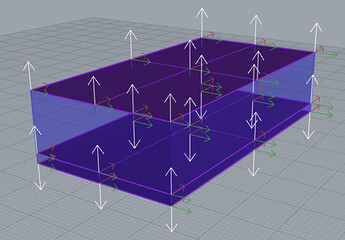Hi Greg,
Perhaps I shouldn’t have replied to all without tagging anybody…
Anyway, thanks a lot for your reply; along with your input to another post I’ve made some progress.
In my case I just have three surfaces - ‘water’ dielectric, ‘water/glass’ interface, and ‘glass dielectric’ I’ve then ‘wrapped’ these surfaces with another four to represent opaque walls of the lake (so more like a pool at the moment).
The ‘water’ dielectric is facing up to the air, the ‘glass’ dielectric down to air below. But I wasn’t sure about the normal for the interface, given the order of numbers in the interface modifier:
void interface glass_water
0
0
8
0.98 0.98 0.98 1.5
0.85 0.59 0.73 1.3
void dielectric water
0
0
5 0.85 0.59 0.73 1.3 0
void dielectric glass
0
0
5 0.98 0.98 0.98 1.5 0
My other question regards the transmission per unit length values needed to define the dielectric/interface primitives: I’m not entirely clear how to define these values (and what Radiance is doing with these numbers). Can I use the numbers in the data sources Lars posted (RGB weighted), or the paper I originally linked? Do you mind sharing the data source you used for the glass of wine question? Just to understand things more clearly.
Thanks as always!
Joe
